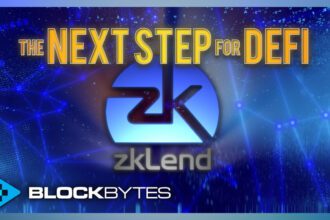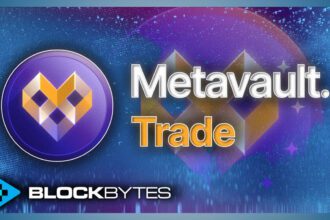Effective traders have more control over their trades by using a variety of order types. By now, you are hopefully familiar with market orders and limit orders and are comfortable with how and when to use them. However, there are more complicated order types that build upon those previous categories to mitigate risk or to capture upside profits when certain price targets are met. The differences can be confusing but once understood, they can be a powerful tool in a traders arsenal.
In this article, we’ll be introducing Stop, Stop-Loss and Stop-Limit orders. We’ll cover what they are, the major differences between them and when they would be appropriate to use.
What is a Stop Order?
Simply put, a stop order is an order to buy or sell an asset when its price moves past a particular point. Once the price crosses the predefined entry or exit point, the stop order will become a market order (stop-market) or a limit order (stop-limit). Stop orders can also be referred to as a “stop”.
How do Stop Orders work?
Picture a stop order like you would an ‘If then’ statement in programming. If a trigger is met then it will execute a specific trade.
As an example, a trader may set a stop order to sell Bitcoin if it moves below $15K. The order will constantly check to see if the price is equal or lower than the set $15K. If the price is equal or lower than $15K, the stop order will become a market order to sell.
As you can see, you can combine stops with market and limit orders to create various types of triggers to manage your trades. The most common examples are Stop-Loss and Stop-Limit orders.
Stop-Loss vs Stop-Limit: What’s the difference?
Stop-Loss
A Stop-Loss order is executed when a set stop price is triggered. When the stop price is triggered, the stop order becomes a market order and is executed at the next available opportunity at current market prices. A common stop-loss strategy is used when a trader enters a position but places an order to exit the position at a specified price.
Stop-Limit
A stop-limit order combines a stop trigger and a limit order. The stop order adds a trigger price for the exchange to place your limit order. When the market reaches the stop price,, it automatically creates a limit order with a custom price.
Although the stop and limit prices can be the same, this isn’t a requirement. In fact, it would be safer for you to set the stop price (trigger price) a bit higher than the limit price for sell orders. For buy orders, you can set the stop price a bit lower than the limit price. This increases the chances of your limit order filling after it triggers.
Stop-Loss and Stop-Limit: Pros and Cons
Investors may use a stop-loss order to limit their losses and protect their profits. By placing a stop-loss order, traders can manage risk by designating an exit price for their asset. The execution of the contract is guaranteed when the stop-loss price is met.
When a stop-loss order is triggered, it will execute the order to buy/sell at the market price, not the stop-loss price. The stop-loss price is just the trigger that initiates the trade. This can lead to increased risk as the actual execution price of the trade may vary from the stop-loss price in highly volatile markets.
A stop-limit order allows for greater customization and planning for trades. The automation factor is also important for those that are not always able to monitor prices and market movements. For those that can master technical analysis and are comfortable when failsafes are in place, stop-limit orders can be very useful.
Stop-Limit orders share the same disadvantages as limit orders, mainly due to the fact that there is no guarantee that the order will be executed. Highly volatile assets can overshoot the parameters you place within your order. Liquidity can also be an issue if there aren’t enough price takers to fill out your order.
Stop-loss and stop-limit orders can provide different types of protection for both long and short investors. Stop-loss orders guarantee execution, while stop-limit orders guarantee the price.
| Stop-Loss Orders | Stop-Limit Orders | |
| Advantages | Protection against severe downturnsTrade guaranteed if stop is triggered | Flexibility to plan out trades Protects against extreme volatilityGuarnteed minimum price a trade will be executed |
| Disadvantages | Trade executed at market priceMinimal flexibility | No guarantee that the trade will be triggered/executedRequires market insight to effectively utilize |














